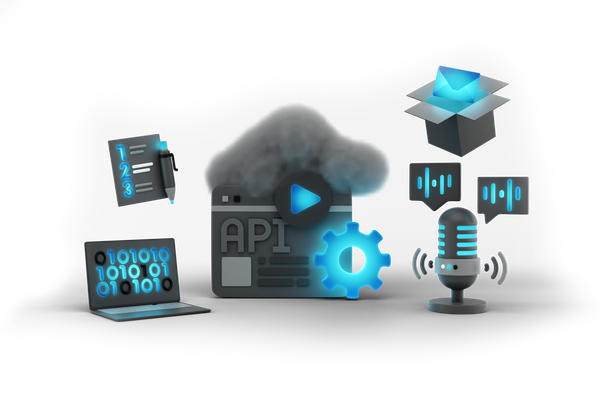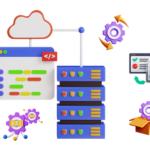APIs (Application Programming Interfaces) have become the backbone of modern software architecture. They allow different software applications to communicate and share data, enabling seamless interactions between systems, services, and devices. But creating an effective API that scales well, performs efficiently, and is easy to maintain can be challenging. This is where API patterns come into play.
API patterns are design principles or best practices that guide developers in building APIs that meet performance, security, and usability standards. In this article, we’ll explore several key API patterns that are essential for designing robust and scalable APIs.
1. RESTful API Pattern
The REST (Representational State Transfer) pattern is one of the most widely used API design approaches. It relies on stateless communication, where each request from a client contains all the necessary information to process that request. REST APIs use standard HTTP methods such as GET, POST, PUT, and DELETE to perform operations on resources (e.g., users, products, etc.).
Benefits of RESTful APIs:
- Simplicity: REST APIs are easy to understand and use, making them a popular choice for developers.
- Statelessness: Since each request is independent, there’s no need for the server to remember previous requests, making it easier to scale.
- Cacheability: REST APIs can be cached to improve performance, reducing the load on servers.
When to use it: REST is ideal for simple CRUD operations and services where the client-server interaction is stateless, and there is a need for scalability.
2. GraphQL Pattern
GraphQL is an alternative to REST, providing a more flexible and efficient way to interact with APIs. Unlike REST, where each request corresponds to a fixed endpoint (e.g., /users, /products), GraphQL allows clients to specify exactly what data they need. This eliminates the problem of over-fetching or under-fetching data, which is common in REST APIs.
Benefits of GraphQL:
- Client Control: Clients have full control over the structure of the responses, meaning they can retrieve exactly the data they need in a single request.
- Efficient Data Retrieval: With GraphQL, clients can combine multiple requests into a single query, reducing the number of API calls.
- Strong Typing: GraphQL uses a strongly typed schema, which can improve documentation and make the API easier to understand.
When to use it: GraphQL is perfect for applications that require complex data relationships and dynamic data retrieval, such as mobile apps or single-page web applications.
3. Microservices API Pattern
Microservices are a modern approach to building large-scale applications by breaking them down into small, independently deployable services. Each service is responsible for a specific piece of functionality, and APIs serve as the communication mechanism between these microservices.
Benefits of the Microservices API pattern:
- Scalability: Each service can be scaled independently based on its load.
- Flexibility: Different microservices can be developed using different programming languages or technologies.
- Resilience: If one service fails, it doesn’t necessarily bring down the entire system, as each microservice is isolated.
When to use it: Microservices are ideal for large, complex applications that need to be broken down into smaller, more manageable components, especially for systems that require high availability and fault tolerance.
4. WebSocket API Pattern
WebSockets provide a full-duplex communication channel over a single, long-lived connection between the client and the server. Unlike traditional HTTP APIs, which are request-response-based, WebSockets enable real-time, bidirectional communication.
Benefits of WebSocket APIs:
- Real-time Interaction: WebSockets are ideal for applications that require real-time communication, such as chat applications, live feeds, and online gaming.
- Reduced Latency: WebSockets eliminate the need for multiple HTTP requests, reducing the latency for time-sensitive interactions.
- Continuous Connection: Once the WebSocket connection is established, data can flow in both directions without the need to reopen connections.
When to use it: Use WebSockets for applications requiring low-latency, real-time data exchange, such as financial trading platforms, online gaming, or messaging services.
5. SOAP (Simple Object Access Protocol) API Pattern
SOAP is an older, XML-based API protocol that allows for secure, transactional communication between systems. Although it has been largely replaced by REST and newer protocols, SOAP is still relevant in certain enterprise and legacy systems due to its support for features like message security, ACID compliance, and strict standards.
Benefits of SOAP:
- Security: SOAP supports advanced security features (e.g., WS-Security) that are ideal for applications requiring high levels of security, such as banking systems or healthcare.
- Reliability: SOAP supports ACID (Atomicity, Consistency, Isolation, Durability) transactions, making it suitable for critical business applications.
- Extensibility: SOAP APIs can be easily extended with custom functionalities using XML schemas.
When to use it: SOAP is best for applications where security, reliability, and complex transactions are essential, such as financial services and government systems.
6. Event-Driven API Pattern
Event-driven APIs are used in systems where actions are triggered by events. In this pattern, services communicate asynchronously by emitting and responding to events, often using message brokers like Kafka or RabbitMQ. This allows for loosely coupled components, where each service can act independently.
Benefits of Event-Driven APIs:
- Asynchronous Communication: Event-driven APIs support asynchronous processing, which helps to decouple services and improve system scalability.
- Real-time Processing: They allow for real-time data processing, which is useful in applications like monitoring, IoT, and recommendation engines.
- Flexibility: Event-driven systems can adapt easily to changes, as services don’t need to know about each other’s implementation details.
When to use it: Event-driven APIs are best for systems that require real-time data processing, such as IoT applications, data pipelines, and high-volume e-commerce sites.



